|
|
|
Cambridge University Press
|
Many practical applications require the reconstruction of a multivariate function from discrete, unstructured data. This book gives a self-contained, complete introduction into this subject. It concentrates on truly meshless methods such as radial basis functions, moving least squares, and partitions of unity. The book starts with an overview on typical applications of scattered data approximation, coming from surface reconstruction, fluid-structure interaction, and the numerical solution of partial differential equations. It then leads the reader from basic properties to the current state of research, addressing all important issues, such as existence, uniqueness, approximation properties, numerical stability, and efficient implementation. Each chapter ends with a section giving information on the historical background and hints for further reading. Complete proofs are included, making this perfectly suited for graduate courses on multivariate approximation and it can be used to support courses in computer aided geometric design, and meshless methods for partial differential equations. |
|
Science as Psychology reveals the complexity and richness of rationality by demonstrating how social relationships, emotion, culture and identity, are implicated in the problem-solving practices of laboratory scientists. The authors gather and analyze interview and observational data from innovation-focused laboratories in the engineering sciences to show how the complex practices of laboratory research scientists provide rich psychological insights, and how a better understanding of science practice facilitates understanding of human beings more generally. The study focuses not on dismantling the rational core of scientific practice, but on illustrating how social, personal and cognitive processes are intricately woven together in scientific thinking. The authors argue that this characterization addresses the integration problem in science studies — how to characterize the fluid entanglements of cognitive, affective, material, cultural and other dimensions of discovery and problem solving. The book is thus a contribution to science studies, the psychology of science and general psychology. |
|
Noam Chomsky is one of the most influential thinkers of our time, yet his views are often misunderstood. In this previously unpublished series of interviews, Chomsky discusses his iconoclastic and important ideas concerning language, human nature and politics. In dialogue with James McGilvray, Professor of Philosophy at McGill University, Chomsky takes up a wide variety of topics — the nature of language, the philosophies of language and mind, morality and universality, science and common sense, and the evolution of language. McGilvray's extensive commentary helps make this incisive set of interviews accessible to a variety of readers. The volume is essential reading for those involved in the study of language and mind, as well as anyone with an interest in Chomsky's ideas. |
|
What terms would early Christians have used to address one another? In the first book-length study on this topic, Paul Trebilco investigates the origin, use and function of seven key self-designations: 'brothers and sisters', 'believers', 'saints', 'the assembly', 'disciples', 'the Way', and 'Christian'. In doing so, he discovers what they reveal about the identity, self-understanding and character of the early Christian movement. This study sheds light on the theology of particular New Testament authors and on the relationship of early Christian authors and communities to the Old Testament and to the wider context of the Greco-Roman world. Trebilco's writing is informed by other work in the area of sociolinguistics on the development of self-designations and labels and provides a fascinating insight into this often neglected topic. |
|
During past years many countries constructed large accelerators for investigating heavy ion collisions, and new theoretical techniques for analysing results and making predictions were developed. Semi-classical methods were studied in the early days of quantum mechanics. Their application to heavy ion collisions has led to new advances and a number of different schools have grown up, each one emphasising different aspects of the theory. The aim of this book is to present a unified treatment of various lines of development. This book will be of great interest to graduate students wishing to learn about semi-classical methods in nuclear physics and to theoretical and experimental nuclear physicists, especially those working in heavy ion physics. It will also be of interest to research workers in other areas, such as atomic physics and quantum chemistry, where similar techniques are used. |
|
The fall of the Ottoman and Russian empires were watershed events in modern history. The unraveling of these empires was both cause and consequence of World War I and resulted in the deaths of millions. It irrevocably changed the landscape of the Middle East and Eurasia and reverberates to this day in conflicts throughout the Caucasus and Middle East. Shattering Empires draws on extensive research in the Ottoman and Russian archives to tell the story of the rivalry and collapse of two great empires. Overturning accounts that portray their clash as one of conflicting nationalisms, this pioneering study argues that geopolitical competition and the emergence of a new global interstate order provide the key to understanding the course of history in the Ottoman-Russian borderlands in the twentieth century. It will appeal to those interested in Middle Eastern, Russian, and Eurasian history, international relations, ethnic conflict, and World War I. |
|
A pious woman, Richelde of Fervaques built a chapel at Walsingham about AD 1130; her son William converted it into a priory about twenty years later. The original chapel may have been meant to reproduce the Holy House at Nazetheth where the Annunciation took place. The abbey is now a ruin, but Walsingham with its nearby shrine and Slipper Chapel has now again become an important place of pilgrimage, visited annually by many thousands of Anglicans and Roman Catholics. Mr Dickinson gives a detailed and scholarly history of the priory in the first part of his 1956 book. The second part traces, from the remains and past records, the architecture of the site. The plates and plan help the reader to follow this reconstitution and give some idea of the past beauty of the monastery and its shrine. |
|
So you want to be a Journalist? Unplugged is a fully revised guide to the world of journalism. This new edition of Bruce Grundy's guide for journalists takes us through new media's impact on the structure and practice of journalism today, with its 24-hour news cycle of multi-platform, interactive media audiences. The book contains instructions on writing for news media as well as practical advice on all facets of reporting. Skills involved in finding information, interviewing, writing news and features, research and investigation, basic subbing, layout and design are covered, along with the essentials of grammar, the law, and practical tips on ethical and professional behaviour. New to the second edition: online journalism incorporated throughout the text; Vignettes and case studies that bring the text to life; Examples from Australian, New Zealand and international media; Extended section on ethics; Extensively updated research section, to help students recognise quality internet research; Extensive companion website including further writing practice. |
|
In this 2009 book, van Dijk presents a new theory of context that explains how text and talk are adapted to their social environment. He argues that instead of the usual direct relationship being established between society and discourse, this influence is indirect and depends on how language users themselves 'define' the communicative situation. The concept van Dijk introduces for such definitions is that of context models. These models control all language production and understanding and explain how discourse is made appropriate in each situation. They are the missing link between language and society so far ignored in pragmatics and sociolinguistics. In this interdisciplinary book, the new theory of context is developed from a linguistic and psychological perspective. The theory is applied to the domain of politics, including the debate about the war in Iraq, where political leaders' speeches serve as a case study for detailed contextual analysis. |
|
Society and the Language Classroom provides a new perspective on classroom research. Through a series of case studies, it examines the ways that learners and teachers behave in English language classrooms in different parts of the world, including Australia, South Africa, Indonesia, Japan, Kenya, China and Pakistan, and at primary, secondary and tertiary level. Thought-provoking issues emerging from the case studies include the possibility that: learners' expectations of what behaviour is appropriate in the classroom may thwart teachers' attempts to bring about change; innovation may have unpredictable consequences unless careful study of classroom behaviour has been carried out. This approach to the interpretation of classroom behaviour has important implications, particularly for teachers, teacher educators and curriculum planners. |
|
Looking for an easy-to-use, practical guide to conducting fieldwork in sociolinguistics? This invaluable textbook will give you the skills and knowledge required for carrying out research projects in 'the field', including: How to select and enter a community; How to design a research sample; What recording equipment to choose and how to operate it; How to collect, store and manage data; How to interact effectively with participants and communities; What ethical issues you should be aware of. Carefully designed to be of maximum practical use to students and researchers in sociolinguistics, linguistic anthropology and related fields, the book is packed with useful features, including: Helpful checklists for recording techniques and equipment specifications; Practical examples taken from classic sociolinguistic studies; Vivid passages in which students recount their own experiences of doing fieldwork in many different parts of the world. |
|
This accessible new textbook provides a clear introduction to sociolinguistics, the study of why we speak the way we do, and the social factors that influence our linguistic decisions. Based on the notion of 'choice' — that as speakers we select from the options open to us — it provides a solid theoretical framework to deal with the most fascinating characteristic of language: its variability and diversity. Topics covered include dialects, gender and age specific speech forms, professional jargons, diglossia, bilingualism, code-switching, pidgin languages, and language planning, all of which are unified by the common theme that speakers, by making choices, create their language. Drawing on linguistic variation from a wide range of societies and their languages, this is set to become a key text for all students of sociolinguistics, and will be welcomed by anyone interested in the complex interaction between language and society. |
|
One of Sophocles' more accomplished dramas, the Electra has always generated a good deal of scholarly debate. This edition, the first full-scale commentary on any play of Sophocles since the nineteenth century, explores afresh longstanding controversies such as the moral status of the killing of Clytemnestra, while also investigating many subjects which have traditionally attracted less attention, such as the place of rhetoric within the drama, the use of typical scenes, and allusions to epinician poetry. It provides original metrical analyses of the lyrical sections of the play and a completely revised Greek text. New research on the papyri, mediaeval manuscripts and printed editions has led to a more accurate apparatus criticus than ever before, with many conjectures attributed to their rightful owners for the first time. |
|
The Sound Structure of English provides a clear introduction to English phonetics and phonology. Tailored to suit the needs of individual, one-term course modules, it assumes no prior knowledge of the subject, and presents the basic facts in a straightforward manner, making it the ideal text for beginners. Students are guided step-by-step through the main concepts and techniques of phonetic and phonological analysis, aided by concise chapter summaries, suggestions for further reading, and a comprehensive glossary of all the terms introduced. Each chapter is accompanied by an engaging set of exercises and discussion questions, encouraging students to consolidate and develop their learning, and providing essential self-study material. The book is accompanied by a companion website, featuring solutions to the exercises and useful additional resources. Providing the essential knowledge and skills for those embarking on the study of English sounds, it is set to become the leading introduction to the field. |
|
Spelling matters to people. In America and Britain every day, members of the public write to the media on spelling issues, and take part in spelling contests. In Germany, a reform of the spelling system has provoked a constitutional crisis; in Galicia, a 'war of orthographies' parallels an intense public debate on national identity; on walls, bridges and trains globally, PUNX and ANARKISTS proclaim their identities orthographically. The way we spell often represents an attempt to associate with, or dissociate from, other languages. In Spelling and Society, Mark Sebba explores why matters of orthography are of real concern to so many groups, as a reflection of culture, history and social practices, and as a powerful symbol of national or local identity. This 2007 book will be welcomed by students and researchers in English language, orthography and sociolinguistics, and by anyone interested in the importance of spelling in contemporary society. |

|
Many legal writing texts emphasize how one writes; this book is unique because it also focuses on why one writes. Every chapter challenges the reader to write to achieve a strategic objective. Each assignment has been carefully considered by the authors, and fully vetted to simulate the decision-making involved in the preparation of important legal writing, whether in a general counsel's office, a law office, a government attorney's office, or a judge's chambers. Simply put, the authors' approach is that effective legal writing does not exist in a vacuum. This book provides practical assignments that teach the student that the best legal writing is not an end in itself, but a means to a larger strategic objective. |
|
There is now widespread agreement that innovation holds the key to future economic and social prosperity in developed countries. Experts studying contemporary capitalism also agree that the battle against unemployment and relocations can only be won through innovation. But what kind of innovation is required and what is the best way to manage, steer and organize it? Grounded on experiences of innovative firms and based on the most recent design theories, this book argues that instead of relying on traditional R&D and project management techniques, the strategic management of innovation must be based on innovative design activities. It analyses and explains new management principles and techniques that deal with these activities, including innovation fields, lineages, C-K (Concept-Knowledge) diagrams and design spaces. The book is ideal for advanced courses in innovation management in industrial design schools, business schools, engineering schools, as well as managers looking to improve their practice. |
|
At a time when corporate scandals and major financial failures dominate newspaper headlines, the importance of good risk management practices has never been more obvious. The absence or mismanagement of such practices can have devastating effects on exposed organizations and the wider economy (Barings Bank, Enron, Lehmann Brothers, Northern Rock, to name but a few). Today's organizations and corporate leaders must learn the lessons of such failures by developing practices to deal effectively with risk. This book is an important step towards this end. Written from a European perspective, it brings together ideas, concepts and practices developed in various risk markets and academic fields to provide a much-needed overview of different approaches to risk management. It critiques prevailing enterprise risk management frameworks (ERMs) and proposes a suitable alternative. Combining academic rigour and practical experience, this is an important resource for graduate students and professionals concerned with strategic risk management. |
|
All students taking laboratory courses within the physical sciences and engineering will benefit from this book, whilst researchers will find it an invaluable reference. This concise, practical guide brings the reader up-to-speed on the proper handling and presentation of scientific data and its inaccuracies. It covers all the vital topics with practical guidelines, computer programs (in Python), and recipes for handling experimental errors and reporting experimental data. In addition to the essentials, it also provides further background material for advanced readers who want to understand how the methods work. Plenty of examples, exercises and solutions are provided to aid and test understanding, whilst useful data, tables and formulas are compiled in a handy section for easy reference. |
|
This engaging introduction explores the key principles of equity and trusts law and offers students effective learning features. By covering the essentials of each topic, it ensures students have the foundations for successful further study. The law is made relevant to current practice through chapters that define and explain key legal principles. Examples and exercises set the law in context and make the subject interesting and dynamic by showing how these rules apply in real life. Key facts sections and summaries help students remember the crucial points of each topic and practical exercises offer students the opportunity to apply the law. Exploring clearly and concisely the subject's key principles, this should be every equity student's first port of call. |
|